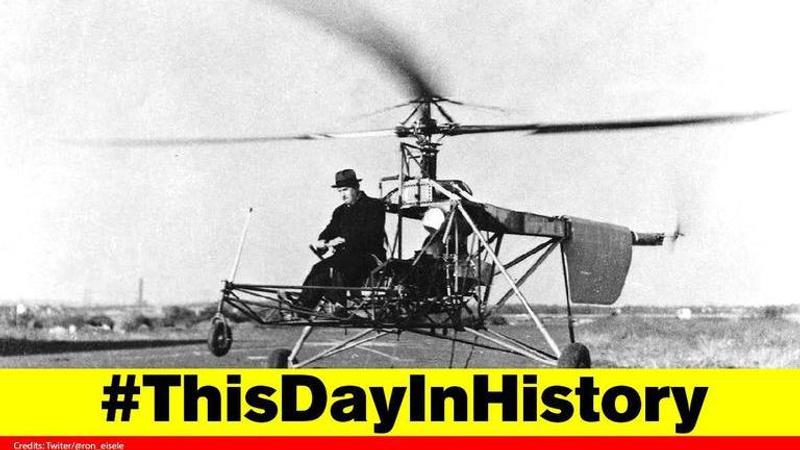Published 14:57 IST, September 14th 2020
World’s first practical helicopter VS-300 took flight at Stratford on this day in 1939
World’s first practical helicopter, designed by Igor Sikorsky, took flight at Stratford, Connecticut, on this day, i.e September 14, in 1939.

World’s first practical helicopter, designed by Igor Sikorsky, took flight at Stratford, Connecticut, on this day, i.e September 14, in 1939. The helicopter named VS-300 was built by the Vought-Sikorsky Aircraft Division of the United Aircraft Corporation. It was the first to incorporate a single main rotor and tail rotor design.
On September 14, 1939, the helicopter tool a tethered flight, which lasted just a few seconds. VS-300 had an innovative 28-foot diameter with a three-blade rotor, which allowed the helicopter for a variable pitch for the blades with a blade speed of 250 to 300 mph. The helicopter provided the basis for the first production helicopters and it also became the standard for helicopter manufacturing across the globe.
According to anecdotes, Sikorsky submitted the patent application for a direct lift aircraft, which included all major engineering features of the VS-300 on June 27, 1931. The patent was then granted on March 19, 1935.
(Image: @airpowercradle/Twitter)
Development and modification of VS-300
While developing the concept of the rotary-wing flight, Sikorsky was the first to introduce a single engine to power both the main and tail rotor systems. The designer later added a vertical airfoil surface to the end of the tail in a bid to assist anti-torque. However, this was later removed when it proved to be ineffective.
Sikorsky added two smaller vertical-axis lifting rotors to either side aft of the tailbone as the cyclic control was found to be difficult to perfect. By varying pitch of the rotors simultaneously, fore and aft control was then provided. Roll control, on the other hand, was provided by differential pitching of the blades.
(Image: @AeroSolutions/Twitter)
It was in 1941, that Sikorsky fitted utility floats to the VS-300 and performed a water landing and takeoff. On May 6, 1941, the VS-300 beat the world endurance record, by staying aloft for 1 hour 32 minutes and 26 seconds. According to anecdotes, the final variant of VS-300 was powered by 150 hp Franklin engine. The helicopter was one of the first helicopters capable of carrying cargo. Over a two-year-period, VS-300 was modified until the new cyclic control system gave much-improved flight behaviour. Today, the helicopter remains on display at the Henry Ford Museum in Michigan.
Updated 14:57 IST, September 14th 2020






